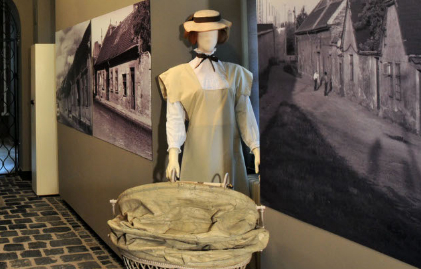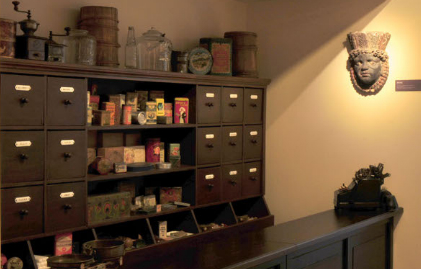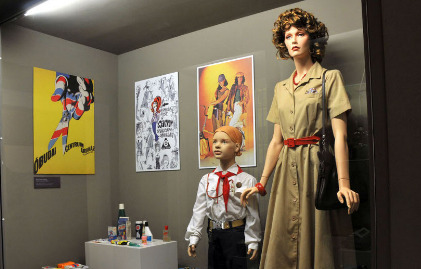Clear Concept With a little Nostalgy
Óbuda Museum
The Óbuda Museum opened last year after a great transformation.
| Pataki Hanna Tina |
2011-05-18 14:45 |
In the renewed exhibition rooms, store rooms and offices a visitor-friendly local history museum can be found, with modern technology and up-to-date, clear ideas and concepts.
The exhibitions of Hungarian local history museums differ significantly in terms of quality and actuality. It is not rare that these expositions are not much more than just the objects themselves on display without any kind of meaning or message; the only reason they are in a showcase is the fact that they were found in the locality. Several times the visitors find themselves in a store room for furniture or paintings. Local history museums however can play a very important role in the integration and self identification of the people living in the area.
 Óbuda Museum / The Past
Óbuda Museum / The Past
The renewal of the Óbuda Local History Museum was long overdue. Not only its infrastructure but the permanent exhibition as a whole needed the process of recreating and up-to-dating. The visitors could easily get the impression that the museum was ready to display anything, anytime without any kind of connection or link with the history of Óbuda.
Óbuda In The Museum – Past and Present
The new exhibition, opened in the enlarged showrooms (Óbuda – Three Faces of a Town) is without any of the mentioned inconsistencies. According to the concept (created under the leadership of director Noémi Népessy) of the exhibition it is clear from the start that the visitor is  not given the total reconstruction of the history of the quarter, 3 significant period are presented in depth instead.
not given the total reconstruction of the history of the quarter, 3 significant period are presented in depth instead.
Three Faces of Óbuda
From the entrance to the exhibition rooms the visitors can follow the history of Óbuda presented on graphical boards. After the outlines of historical Óbuda the 3 faces and phases are introduced: the medieval Óbuda of the 14th century, the 19th century agricultural town owned by the Zichy family, and the 3rd period, when Óbuda was already one of the districts of Budapest, during the 1960s, 1970s and ‘80s..
 The Means
The Means
The creators of the exhibition used various representational instruments. The medieval palace of Queen Elisabeth is not only presented with the help of a model, all the relevant information and graphical images linked with the building and its history can be gathered from the touch screen monitor as well. The modern technological instruments complete the museum’s rich collection of objects. Besides authentic interiors documentaries and fiction films enrich the many layers of information that can be gathered from the exhibition.
After going through the show the visitor surely will leave with the good feeling of learning so much about Óbuda in so entertaining a way.
Hint
Visit the website of the museum!